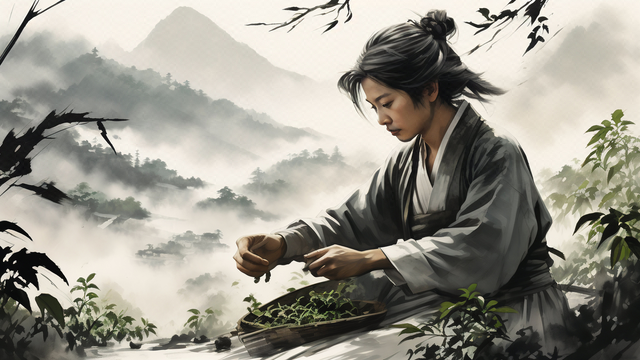
The Rich Heritage of Chinese Tea
China, known as the birthplace of tea, boasts a rich and diverse history of tea cultivation and consumption that spans thousands of years. Tea is not just a beverage China; it a cultural symbol, an art form, an integral part of social life. This article explores the various aspects of Chinese tea, highlighting its significance and the different types available.
The History of Tea in China
Tea drinking in China dates back to the Shang Dynasty (1600–1046 BC), with legends suggesting that Emperor Shen Nong discovered tea accidentally when leaves from a wild tree blew into his boiling water. Over the centuries, tea evolved into a significant part of Chinese social customs, and by the Tang Dynasty (618–907 AD), it was already popular among the elite. The famous tea pilgrimage known as theTea Horse Road" helped spread tea culture to neighboring regions and countries.
Types of Chinese Tea
Chinese tea can be broadly categorized into several types, each with unique characteristics:
- Green Tea: Known for its fresh taste and vibrant color, green tea is minimally oxidized. Famous varieties include Longjing (Dragon Well) and Biluochun. Green tea is renowned for its health benefits, including antioxidants that promote overall well-being.
- Black Tea: In China, what is known as "black tea" (红茶, hóng chá) is fully oxidized, offering bold flavor. Popular types include Keemun and Dianhong. Black tea has a rich aroma is often enjoyed with milk or sugar.
- Oolong Tea: This semi-oxidized tea is known for its complexity. Its flavor can range from floral to fruity, depending on processing method. Tieguanyin (Iron Goddess of Mercy) is one of the most famous oolong teas.
- White Tea: This delicate tea is made from young leaves and buds, with minimal processing. Silver Needle is a well-known white tea variety, cherished for its subtle flavor and health benefits.
- Pu-erh Tea: A type of fermented tea, pu-erh is often pressed into cakes or bricks. It has a rich, earthy flavor and is highly valued for its unique aging process. This tea comes from the Yunnan province and is thought to aid digestion.
The Cultural Significance of Chinese Tea
Tea culture in China involves elaborate rituals and traditions, such as the Gongfu tea ceremony. This practice emphasizes the art of brewing and appreciating tea, reflecting the deep respect for the beverage. Offering tea to guests is a sign of hospitality and a way to build relationships.
Moreover, tea is often associated with philosophical concepts such as harmony and balance, making it an essential part of Chinese aesthetics and lifestyle. The phrase "cha yi" (茶艺), meaning tea art, captures the essence of the intricate relationship between tea and Chinese culture.
Conclusion
Chinese tea is more than just a drink; it is a vessel of heritage, health, and social connection. The variety of tea types and cultural rituals surrounding them reflect China's deep appreciation for this ancient beverage. As more people the world discover the joys of tea, the legacy of Chinese continues to spread, bringing with it the rich traditions and philosophies its origin. Whether you're savoring a cup of green tea or indulging in aged pu-erh, each sip tells a story of history and culture that dates back millennia.